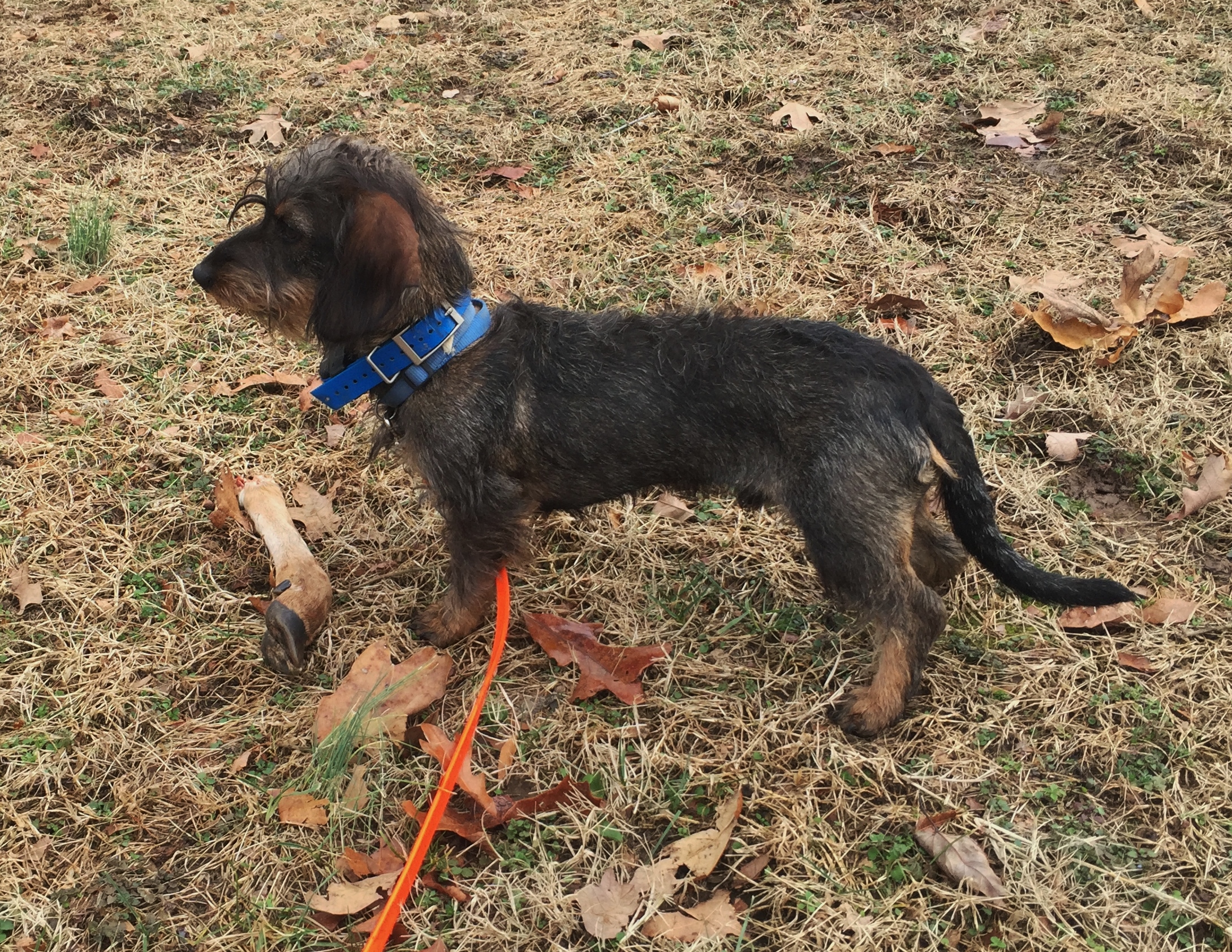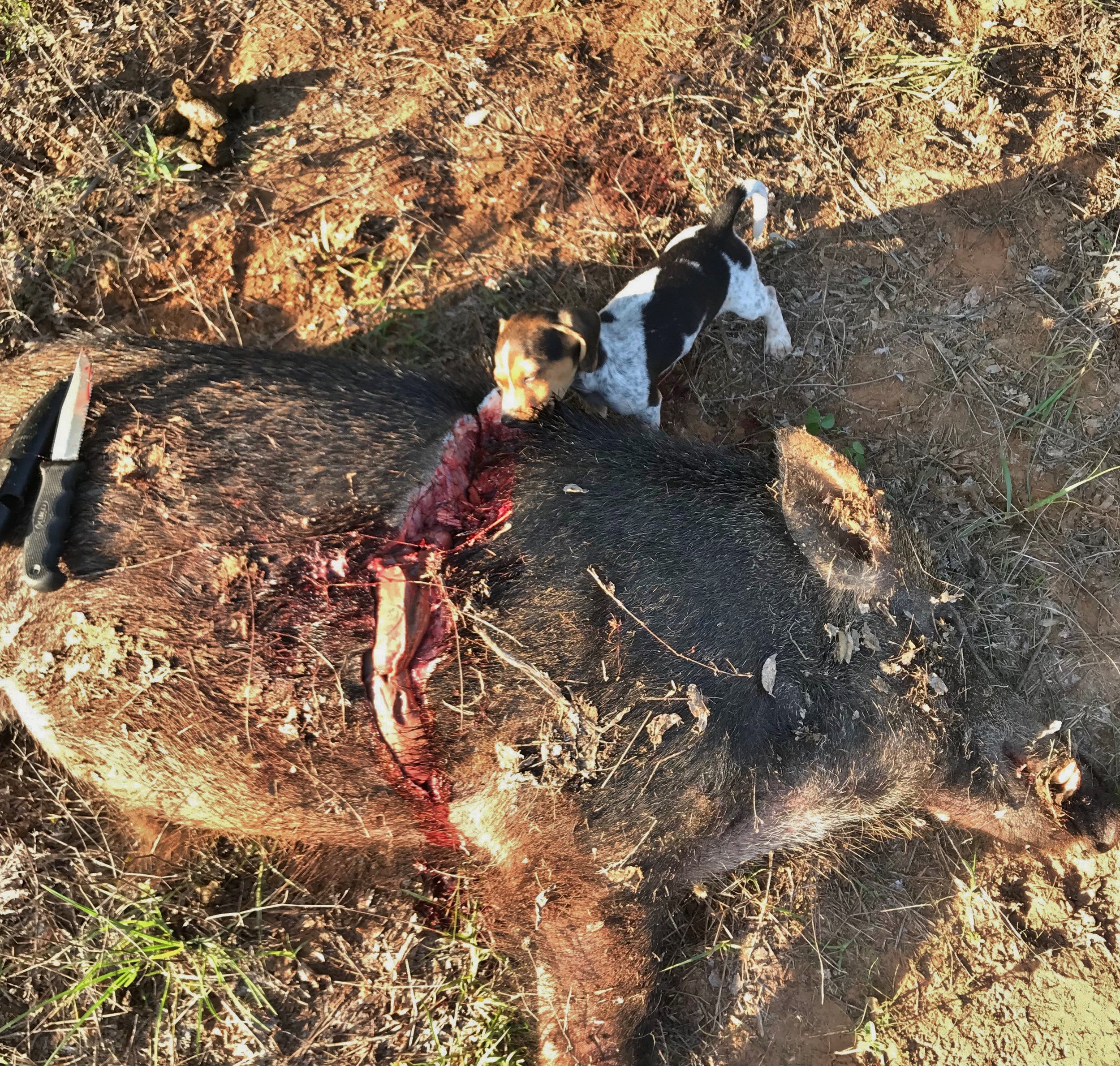Over the years, I have gotten a lot of calls from potential trackers looking for a tracking dog. Many of these callers are looking for a "finished" dog, and I try to explain why such an animal doesn't exist, at least not for the "on lead" tracker. Increasingly, though, I get calls asking my opinion on what type of dog I would recommend.
I never mind giving my advice to potential trackers at no charge. I'm always ready to talk about tracking dogs, after all. However, to better facilitate those with more specific requests, I have added a puppy finding service to the list of services that I provide to trackers. This service includes a detailed interview about what qualities the tracker wants in a dog; what size of dog best suits them; what other pets and family members are present; what other tasks, if any, the dog may be asked to do; and a long list of other questions.
After a detailed history is taken from the tracker, we start going down the lists of dogs that I recommend for their specific situation. Then I facilitate them in acquiring a dog from a trusted breeder. All this is done for a very nominal fee with the main interest being to connect good breeders and trackers, and get the right "fit" for each individual. I can tell you from experience that choosing a dog that you can live with 365 days a year is at least as important as how well the dog tracks.
A few weeks back, a gentleman named Clark called me from Texas to ask about tracking dogs. After a long discussion, it was clear that he was serious about getting a dog. With 3 young daughters at home, he was sure that he wanted a small sized dog, but hadn't decided exactly what breed would suit his family best. Clark had recently purchased a 10 month old dog from a well known kennel in his part of the country. The kennel is known for raising tracking dogs. Unfortunately, after spending a lot of money, he ended up with a dog that at 10 months, had never been socialized or even worn a collar. The dog was a mess, and it was quickly returned for a full refund.
When someone calls, wanting a small tracking dog, it is rare that I don't recommend a dachshund from tracking lines. Clark had already spoken to some prominent dachshund breeders and owners, and was confident that he wanted to go a different route. We discussed beagles, bassetts, and even dachsbrackes, but at the end of the day Clark was pretty sure that he wanted a mixed breed. It's rare that anyone ever asks for a mixed breed, and for good reason. Mixed breeds can be unpredictable in the traits that they get from their parents, making it a bit of a crap shoot when it comes to reliability. In this case, Clark not only wanted a mixed breed, but a specific mixed breed. He had read about the success of my healer/beagle mix, Echo, and felt sure that such a dog would fit his family perfectly. I explained that I could have 100 more of the same cross and never get another dog that tracks as good as Echo does, but he still wanted to start searching...so we searched.
Finding a specific type of mixed breed that isn't one of the common "designer dogs" is no easy task. People don't typically breed these dogs together on purpose, and knowing the exact make up of such a mutt is nearly impossible. I knew that Clark was serious though, when just a couple of hours after our conversation he was calling me about a dog in Ohio. Ohio??? That's a bit of a drive for a mixed breed, so our search continued. After several false starts over a few days time, I finally found a single pup within a 2 hour drive from me. After a few calls between the owner, and my client, we decided to proceed. There were a lot of possible pitfalls in the details of this pup, but we decided to give it a try.
I took a trip out to see the dog, and meet the owner. It turns out that this little dog had been the runt of the litter, and had remained hidden in the barn until all the other puppies had been re-homed. It was only after the other puppies had left to their new homes, that the owners discovered that there was another pup. Consequently, the little pup had only had one week of human interaction before I showed up. Despite a little bit of shyness, the dog was friendly and happy. I ran a couple of drags with a deer heart, and was very pleased to see that the pup made short work of both lines, and was a ravenous monster when it found the heart. I had something that I could work with, for sure. After a call back to Clark, we decided to move ahead with the purchase.
Over the next week, the little pup, who would comically be named "Moose", stayed with me. I made good use of our time together, and put her (yes her) to work on tracks right away. Her ravenous appetite for fresh meat and a beagle nose made training her quite easy. We ran drags with deer heart and raw deer meat as well as drags using a very small piece of hide dribbled in blood. My goal was simply to build up some interest, and start working on running lines. She was a quick study, and moved through each leg of training without a hitch. She loved to tug on the hide, and showed plenty of prey drive. She also showed no fear of loud noises, which is always a plus. Additionally, she was quick to socialize, and became a bit of a snuggle bug.
Initially, the plan was for Moose to train with me this fall, but after a bit more discussion with Clark, we decided it was better for him to work with her this season. Clark has access to a lot of hunting property and a lot of game animals. Between management deer tags and feral hogs, Clark was sure that he could get Moose on plenty of tracks this fall. I also felt confident that Clark would continue to put in the time necessary to help Moose advance. I wrote up a detailed tracking plan specific to Moose, based on my week of observations, and sent her south to Texas.
Clark wasted no time getting Moose started. He followed each step of the plan, and continued to communicate with me through the process. Within a week, I was very impressed by how well she was advancing. Here is some tracking work from the little 10 1/2 week old "pocket tracker" shortly after she arrived at her new home. This track is 2.5 hours old and 150 yards long, using a hand sized piece of hide dribbled in blood. Notice here that she is not the least bit distracted by the overhead jet engines.























